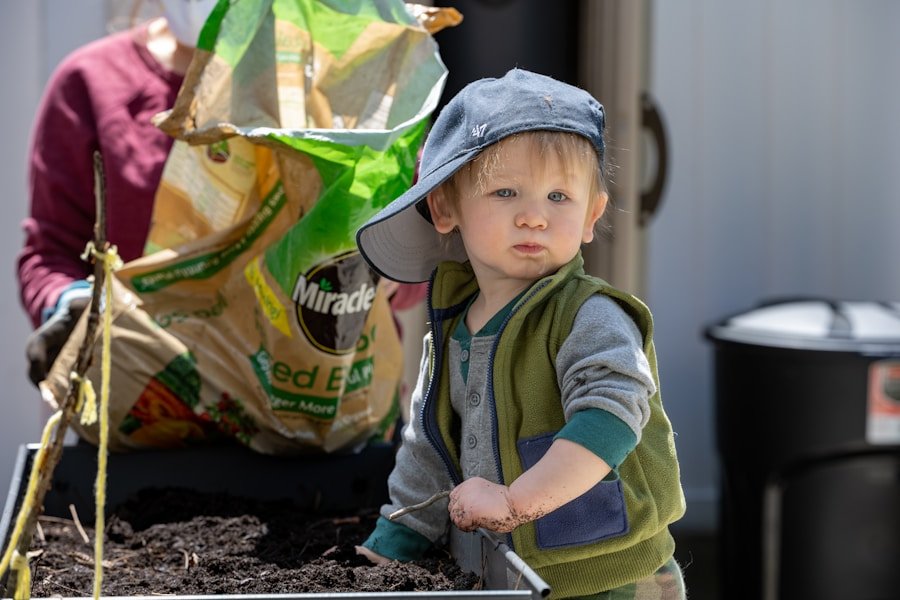Indoor plants have a profound impact on children’s learning and development, offering a multitude of benefits. Scientific studies have demonstrated that indoor plants can significantly improve air quality, reduce stress levels, and boost productivity. Moreover, they provide children with a sense of responsibility and introduce them to the wonders of the natural world.
By caring for plants, children can develop essential skills such as empathy and nurturing, while learning about the fundamental needs of living organisms. In addition, indoor plants serve as a valuable educational resource. Children can gain a comprehensive understanding of plant anatomy, the process of photosynthesis, and the crucial role of water and sunlight in plant growth.
By observing the growth and development of indoor plants, children can develop a deeper appreciation for the life cycle of living organisms and the interconnectedness of the natural world. Overall, indoor plants provide a hands-on learning experience that can foster children’s curiosity and appreciation for nature, ultimately enriching their educational journey.
Key Takeaways
- Indoor plants can be a great way to teach kids about nature and responsibility
- They can improve children’s learning and cognitive development
- Choose easy-to-grow plants like spider plants, succulents, and herbs for kids
- Teach kids about plant care and responsibility through watering and pruning
- Fun activities like creating a mini indoor garden can be both educational and enjoyable for kids
Choosing the Right Indoor Plants for Kids
Easy-to-Grow Options
Some low-maintenance and adaptable indoor plants perfect for kids include spider plants, pothos, and snake plants. These plants can thrive in various light conditions, making them ideal for young beginners.
Safety First
It’s essential to choose plants that are non-toxic and safe for children and pets. Some kid-friendly options include African violets, Christmas cactus, and Boston ferns.
Space-Saving Solutions
Consider the size of the plant and the available space in your home. For smaller areas, compact plants like succulents or air plants are perfect for small pots or terrariums. If you have more space, larger plants like peace lilies or rubber trees can make a bold statement in any room. By selecting the right indoor plants for kids, you can create a safe and engaging learning environment that fosters curiosity and exploration.
Teaching Kids about Plant Care and Responsibility
Teaching kids about plant care and responsibility is an important part of introducing them to indoor gardening. Start by explaining the basic needs of plants, such as water, sunlight, and nutrients. Show them how to water the plants properly and explain the importance of not overwatering or underwatering.
Additionally, teach them about the different types of light requirements for plants and how to position them in the right spot in your home. To instill a sense of responsibility, assign specific tasks related to plant care to your children. This could include watering the plants on a regular schedule, checking for signs of pests or diseases, or repotting the plants when they outgrow their containers.
By giving them ownership over the care of the plants, children can develop a sense of pride and accomplishment as they watch their plants thrive. Encourage them to ask questions and observe the changes in their plants over time, fostering a sense of curiosity and wonder about the natural world.
Fun and Educational Activities with Indoor Plants
| Plant Name | Watering Frequency | Light Requirements | Soil Type |
|---|---|---|---|
| Aloe Vera | Every 3 weeks | Direct sunlight | Well-draining soil |
| Spider Plant | Once a week | Indirect sunlight | Well-draining soil |
| Snake Plant | Every 2-6 weeks | Low to bright indirect light | Well-draining soil |
| Pothos | Once a week | Low to bright indirect light | Well-draining soil |
| Peace Lily | Once a week | Low to bright indirect light | Well-draining soil |
| English Ivy | Once a week | Indirect sunlight | Well-draining soil |
| Rubber Plant | Once a week | Medium to bright indirect light | Well-draining soil |
| ZZ Plant | Every 2-3 weeks | Low to bright indirect light | Well-draining soil |
| Jade Plant | Every 2-3 weeks | Direct sunlight | Well-draining soil |
| Philodendron | Once a week | Low to bright indirect light | Well-draining soil |
There are many fun and educational activities that children can do with indoor plants to enhance their learning experience. One activity is to create a plant journal where children can record observations about their plants, such as growth patterns, changes in leaves or flowers, and any new shoots or buds. This can help them develop their observation skills and learn about the life cycle of plants.
Another activity is to conduct simple experiments with plants, such as testing different watering schedules or light conditions to see how it affects plant growth. This hands-on approach can help children understand the scientific concepts behind plant care and provide a practical application of their knowledge. Additionally, children can also get creative by making plant-related crafts, such as painting pots, creating plant markers, or designing their own terrariums.
These activities can foster creativity and imagination while reinforcing their understanding of plant care.
10 Easy-to-Grow Indoor Plants for Kids to Explore
There are many easy-to-grow indoor plants that are perfect for kids to explore and learn about. One popular choice is the spider plant, which is known for its air-purifying qualities and ability to produce “spiderettes” that can be propagated into new plants. Another easy-to-grow option is the pothos plant, which has trailing vines and comes in a variety of colors and patterns.
Pothos are also known for their resilience and ability to thrive in low light conditions. For children who are interested in flowering plants, African violets are a great choice. These colorful flowers are easy to care for and can bloom year-round with proper care.
Another flowering option is the Christmas cactus, which produces beautiful blooms during the holiday season and is relatively low-maintenance. For children who are interested in unique shapes and textures, consider introducing them to air plants or succulents, which come in a wide variety of shapes and sizes.
Creating a Mini Indoor Garden with Kids
Choosing the Right Plants and Containers
Creating a mini indoor garden with kids can be a fun and rewarding experience for the whole family. Start by selecting a variety of indoor plants that are suitable for children, such as small succulents, air plants, or herbs like basil or mint. Then, gather some decorative pots or containers that children can personalize with paint or stickers to make their own unique planters.
Designing and Caring for the Garden
Next, help children arrange their plants in a way that is visually appealing and allows for proper growth. Consider creating a themed garden, such as a fairy garden with miniature accessories like tiny houses or figurines, or a sensory garden with fragrant herbs and textured plants. Encourage children to take ownership of their mini garden by watering and caring for their plants regularly.
Displaying and Enjoying the Fruits of Their Labor
Finally, find a special spot in your home where the mini garden can be displayed, such as a windowsill or shelf. This will allow children to observe their plants daily and take pride in their creation. Creating a mini indoor garden with kids not only provides an opportunity for hands-on learning but also fosters creativity and imagination.
Tips for Encouraging a Love for Nature through Indoor Plants
Encouraging a love for nature through indoor plants is an important way to instill a sense of appreciation for the natural world in children. One way to do this is by incorporating nature-themed books and activities into their daily routine. Read books about plants and nature together, go on nature walks to observe local flora and fauna, or visit botanical gardens or nature reserves to expose children to the beauty of the outdoors.
Another tip is to involve children in gardening activities outside of the home, such as volunteering at community gardens or participating in planting events at local parks. This hands-on experience can help children develop a deeper connection to nature and understand the importance of environmental conservation. Additionally, consider incorporating nature-inspired art projects into their learning, such as painting landscapes or creating nature collages using leaves and flowers.
Finally, lead by example by demonstrating your own love for nature through your actions. Show children how to care for outdoor plants in your garden or participate in eco-friendly practices at home, such as composting or recycling. By modeling a positive attitude towards nature, you can inspire children to develop their own love for the environment through indoor plants and beyond.
In conclusion, indoor plants offer numerous benefits for children‘s learning and development while providing an opportunity for hands-on exploration and discovery. By choosing the right indoor plants for kids and teaching them about plant care and responsibility, parents can create a nurturing environment that fosters curiosity and appreciation for nature. Through fun and educational activities with indoor plants, children can enhance their understanding of the natural world while developing important skills such as observation, creativity, and empathy.
Ultimately, encouraging a love for nature through indoor plants can have a lasting impact on children’s connection to the environment and their overall well-being.
FAQs
What are some easy-to-grow indoor plants for kids to learn about?
Some easy-to-grow indoor plants for kids to learn about include spider plants, aloe vera, jade plants, snake plants, and pothos.
Why are indoor plants beneficial for kids to learn about?
Indoor plants are beneficial for kids to learn about because they teach responsibility, patience, and the importance of caring for living things. They also help improve air quality and provide a hands-on learning experience.
What are the benefits of teaching kids about indoor plants?
Teaching kids about indoor plants can help them develop an appreciation for nature, improve their observation skills, and enhance their understanding of the natural world. It can also instill a sense of responsibility and empathy towards living things.
How can kids learn about indoor plants?
Kids can learn about indoor plants by observing their growth, watering and caring for them, and researching their specific care needs. They can also participate in gardening activities and experiments related to indoor plants.
What are some educational activities related to indoor plants for kids?
Educational activities related to indoor plants for kids include creating a plant journal to track growth, conducting experiments on plant growth and care, and learning about the different parts of a plant through hands-on activities.
What are some important lessons kids can learn from growing indoor plants?
Kids can learn important lessons such as the life cycle of plants, the role of sunlight and water in plant growth, the importance of soil and nutrients, and the impact of environmental factors on plant health.







